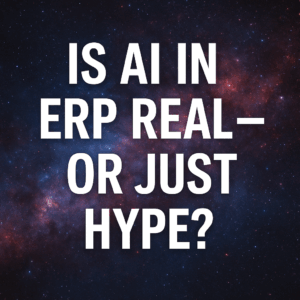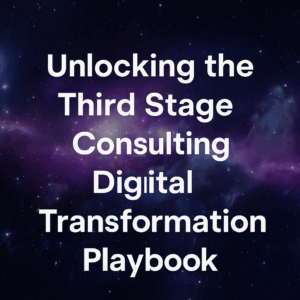Hello, I’m Eric Kimberling, CEO of Third Stage Consulting, and I specialize in guiding organizations through their digital transformation journeys. A common challenge many organizations face is dealing with outdated technologies. This blog aims to provide a structured approach to help you define a roadmap for your organization’s technology initiatives, ensuring you can leverage the best of what technology has to offer to enhance your business.

Table of Contents
ToggleIssues with Outdated Technology
- Security Vulnerabilities: Older technology often lacks the latest security features and updates, making it more susceptible to cyber threats like hacking, viruses, and data breaches. This vulnerability poses a significant risk to the organization’s data security and can lead to substantial financial and reputational damage.
- Decreased Efficiency and Productivity: Outdated systems and software can be slow, unreliable, and incompatible with newer technologies, leading to inefficiencies and productivity losses. Employees may spend more time dealing with technical issues or workaround solutions instead of focusing on their core responsibilities.
- Increased Maintenance Costs: Maintaining and repairing older technology can be more costly than investing in new technology. As technology ages, support from manufacturers often decreases, and replacement parts become scarce and expensive.
- Incompatibility with New Technologies: Outdated technology may not integrate well with newer systems and tools, leading to silos of information and inefficient workflows. This lack of integration can hinder an organization’s ability to adopt new and more efficient technologies.
- Reduced Competitive Edge: In today’s fast-paced business environment, staying current with technology is crucial for maintaining a competitive edge. Outdated technology can limit an organization’s ability to innovate, adapt to market changes, and meet customer expectations.
- Compliance and Regulatory Issues: Certain industries have regulatory requirements for data protection, privacy, and other operations. Outdated technology might not comply with these regulations, leading to legal and financial penalties.
- Poor User Experience: Older systems often have less intuitive interfaces and limited functionality, leading to a poor user experience for both employees and customers. This can affect employee morale and customer satisfaction.
- Limited Data Utilization: Modern businesses rely heavily on data analytics for decision-making. Outdated technology may lack the capability to efficiently collect, store, and analyze data, resulting in missed opportunities for insights and strategic decisions.
- Impact on Scalability: As a business grows, its technology needs often change. Outdated systems might not be scalable or flexible enough to accommodate growth or changes in business strategy.
In summary, while the immediate cost of updating technology can be significant, the long-term costs and risks associated with outdated technology often far outweigh those initial investments. Organizations need to regularly assess and update their technology to ensure they remain secure, efficient, competitive, and aligned with their business goals.

5 Steps to Updating Your Outdated Technology
Step 1: Assess Your Current Landscape
The first step is an in-depth assessment of your current technological portfolio. This involves understanding not just your technologies but also the strengths and weaknesses of your business processes and organizational components. Look beyond technology to grasp the full operational picture of your organization. This assessment will help clarify your priorities and how technology can best be utilized to address them.
Step 2: Define Your Technology Strategy
Once you understand your current situation, it’s time to develop a technology strategy. This strategy should outline the processes you aim to improve, the types of technologies you plan to deploy, and a general timeframe for implementation. It’s essential at this stage to align this strategy with your broader corporate goals and objectives.
Step 3: Evaluate Technology Options
Having defined your high-level roadmap, delve into the specifics by evaluating potential technology solutions. This phase is about comparing different software solutions and vendors to find the best fit for your business requirements and strategy. It’s a crucial step that sets the foundation for successful implementation.
Step 4: Create an Implementation Plan
With a chosen technology, you need to develop a detailed implementation plan. This plan should include specific steps, timelines, and required resources. It’s a blueprint that guides the actual execution of your technology initiative.
Step 5: Measure Results
Finally, it’s crucial to measure the outcomes of your technology investments. This step involves assessing the actual benefits and improvements brought about by the new technologies and making adjustments as necessary. It ensures that your technology investments deliver tangible business value and align with your strategic objectives.
Conclusion
Updating outdated technology is a journey that requires careful planning and execution. By following these steps, you can create a structured approach to digital transformation that aligns with your organization’s specific needs and goals.
Remember, the key to successful technology modernization lies in a well-thought-out strategy, careful evaluation, and continuous measurement of results. Embrace these steps, and you’ll be well on your way to transforming your organization’s technological landscape.
For more insights and assistance in navigating your ERP journey, feel free to contact me at Eric.Kimberling@Thirdstage-consulting.com or explore our resources at Third Stage Consulting.
I also highly recommend downloading our 2024 Digital Enterprise Operations Report and following our weekly podcasts or YouTube channel for more on the holistic approach to business technology.





